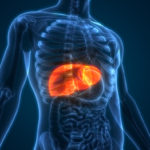
Previous
Can Laundry Harm Your Liver?

Next
Omega-3’s Benefits Now Include Liver Protection
Newly Discovered Fatty Liver Mechanism Supports Antioxidant Use
Recent advances in cellular biology found a direct relationship between cellular stress and a fatty liver. Because they impact the exact mechanism forming this relationship, antioxidants are an absolute must for those with fatty liver concerns.
With a fatty liver affecting approximately 25 percent of American adults, researchers are continuously seeking ways to both prevent and treat it. Although not providing definitive answers, a cellular biology breakthrough illuminating a pathway for fatty liver disease has been published. As a consequence, there is great interest in the folding function of the cell’s protein packaging system and how it contributes to a fatty liver. Aside from its potential pharmaceutical implications for fatty liver disease, this breakthrough has provided more reason than ever for those concerned with a fatty liver to supplement with potent antioxidants.
Experts are uncertain as to the exact cause of fat accumulation in the liver. While chronic alcoholism and Hepatitis C infection can cause fatty liver disease, it is also associated with diabetes and obesity. However, it is clear that a fatty liver can lead to liver inflammation and injury and may eventually progress to cirrhosis and liver failure.
Protein Folding
Protein folding occurs in a cellular compartment called the endoplasmic reticulum. This is a vital cellular process because proteins must be correctly folded into specific, three-dimensional shapes in order to function correctly. Unfolded or misfolded proteins contribute to the pathology of many diseases. Cells rely on a very sensitive system known as the unfolded protein response (UPR) to guard against the cellular stress caused by protein folding problems.
The UPR is a cell’s way to ensure its ability to secrete proteins is working properly. Its role is to turn on genes that help the endoplasmic reticulum properly fold proteins. With these genes turned on, the cell is better equipped to handle the stress of protein folding problems that may arise. However, severe stress can overwhelm the UPR and lead to abnormal cellular function.
Stress
Recently emerging in the journals Developmental Cell, Proceedings of the National Academy of Sciences and Journal of Clinical Investigation, several studies have examined the relationship between endoplasmic reticulum stress and protein folding. In University of Michigan and University of Iowa studies led by Thomas Rutkowski, Ph.D., and Randal J. Kaufman, Ph.D., researchers examined which cells sense stress in the endoplasmic reticulum and what the response is. They inadvertently discovered that the UPR protects against endoplasmic reticulum stress – and that unresolved stress can cause a fatty liver. Hence, the understanding evolved that the UPR protects against fatty liver.
Oxidative stress is known to disrupt protein folding. A different study spearheaded by Kaufman and Jyoti D. Malhotra at the University of Michigan further explored how protein misfolding and oxidative stress impact each other. They found that genetic or chemical intervention to reduce reactive oxygen species improved protein folding and cell survival. Additionally, antioxidant treatment reduced UPR activation, oxidative stress and cell death. Since antioxidants reduce reactive oxygen species, the researchers concluded that they may provide a simple and feasible solution for treating and/or preventing diseases of protein misfolding.
Antioxidants
In much the same way as oxidation creates rust on inanimate objects, oxidation inside the body causes a breakdown of cells, thus producing free radicals. Produced when your body breaks down food, is exposed to pollutants and encounters alcohol, unhealthy foods or cigarette smoke – free radicals damage cells.
Antioxidants are substances that protect your cells against the effects of free radicals. In addition to reducing the effects of free radicals by binding together with these harmful molecules to reduce their destructive power, antioxidants also help repair damage already sustained by cells. There are many sources of antioxidants, including fruit, vegetables and any food rich in vitamins A, C, E and beta-carotene. Antioxidants are believed to be most concentrated in brightly colored produce. For those desiring an additional surge, many dietary supplements are rich in antioxidants.
Upon piecing together the discoveries stemming from Kaufman and Rutkowski’s work, there is an overwhelming realization that surfaces. Supplementing with antioxidants reduces endoplasmic reticulum stress; endoplasmic reticulum stress contributes to protein misfolding; and protein misfolding leads to a fatty liver. Thus, until a safe and proven antidote for fatty liver disease is created, antioxidant therapies are the most logical solution for those wishing to reverse or prevent fat from accumulating in their liver.
http://news.biocompare.com/News/NewsStory/255631/Cellular-Stress-Causes-Fatty-Liver-Disease-in-Mice.html, Study in mice shows direct link between disrupted protein folding and abnormal fat metabolism in the liver, University of Iowa, Retrieved January 4, 2009, Biocompare, December 2008.
http://www.biology4kids.com/files/cell_er.html, Endoplasmic Reticulum – Wrapping it Up, Retrieved January 4, 2009, Andrew Rader Studios, 2009.
http://www.cell.com/developmental-cell/abstract/S1534-5807(08)00475-9, UPR Pathways Combine to Prevent Hepatic Steatosis Caused by ER Stress-Mediated Suppression of Transcriptional Master Regulators, D. Thomas Rutkowski, et al, Retrieved January 4, 2009, Developmental Cell, December 2008.
http://www.nlm.nih.gov/medlineplus/antioxidants.html, Antioxidants, Retrieved January 4, 2009, US National Library of Medicine, 2009.
http://www.pnas.org/content/105/47/18525.abstract, Antioxidants reduce endoplasmic reticulum stress and improve protein secretion, Jyoti D. Malhotra et al, Retrieved January 4, 2009, Proceedings of the National Academy of Sciences of the United States of America, November 2008.
http://www.wisegeek.com/what-are-antioxidants.htm, What are Antioxidants?, Sherry Holetzky, Retrieved January 4, 2009, conjecture corporation, 2009.
http://www2.med.umich.edu/prmc/media/newsroom/details.cfm?ID=925, New pathway found for fatty liver disease, Kim Roth, Retrieved January 4, 2009, University of Michigan Health System, December 2008.









